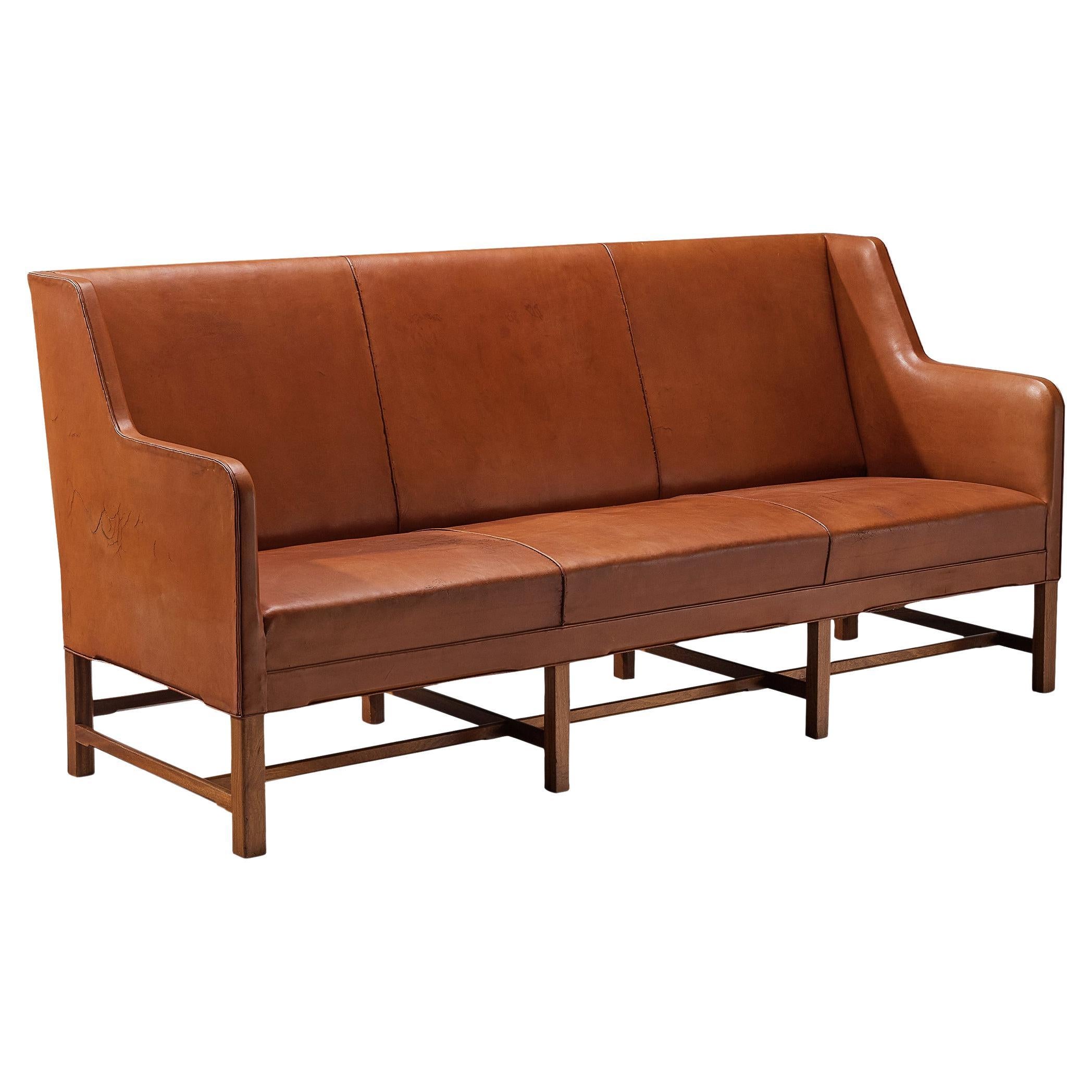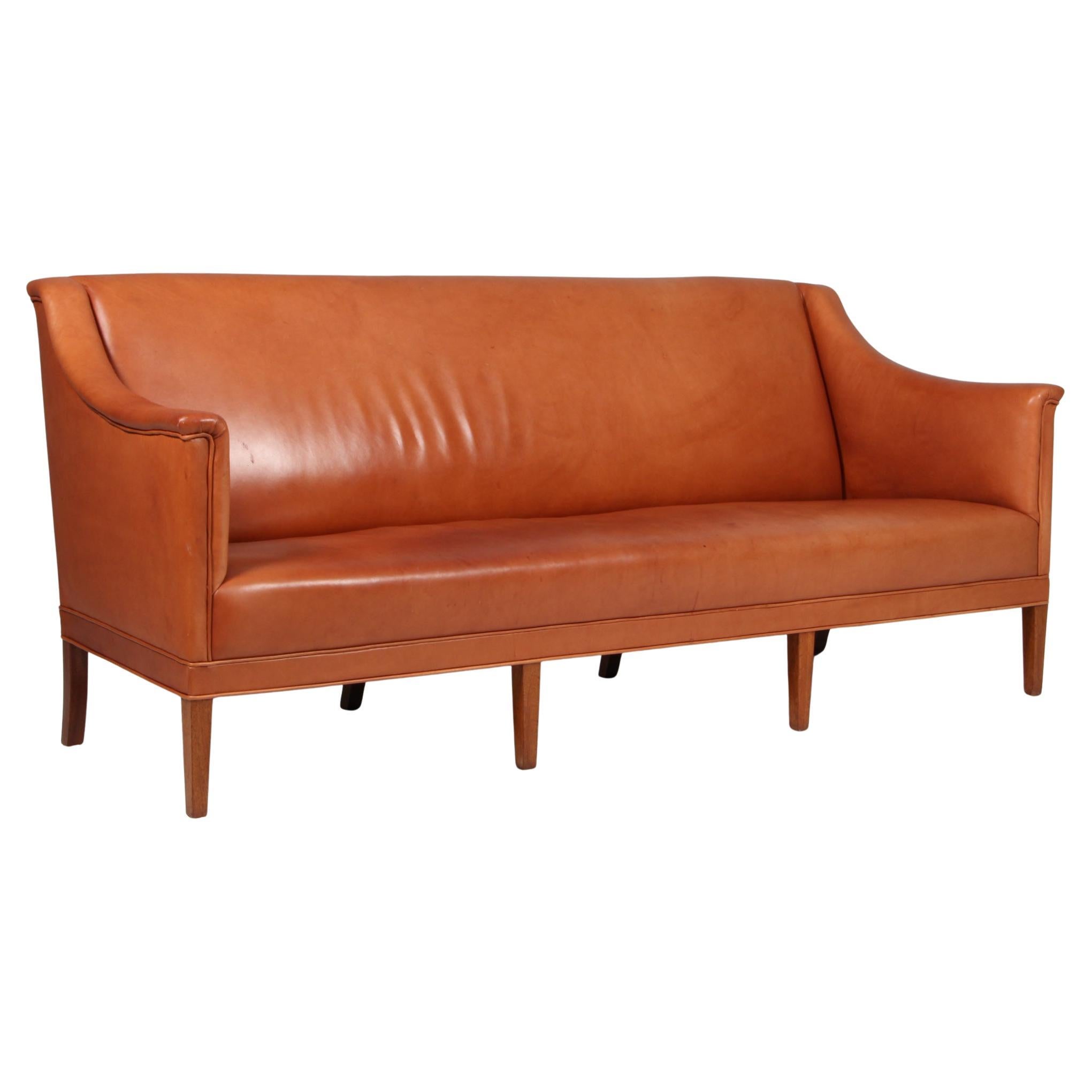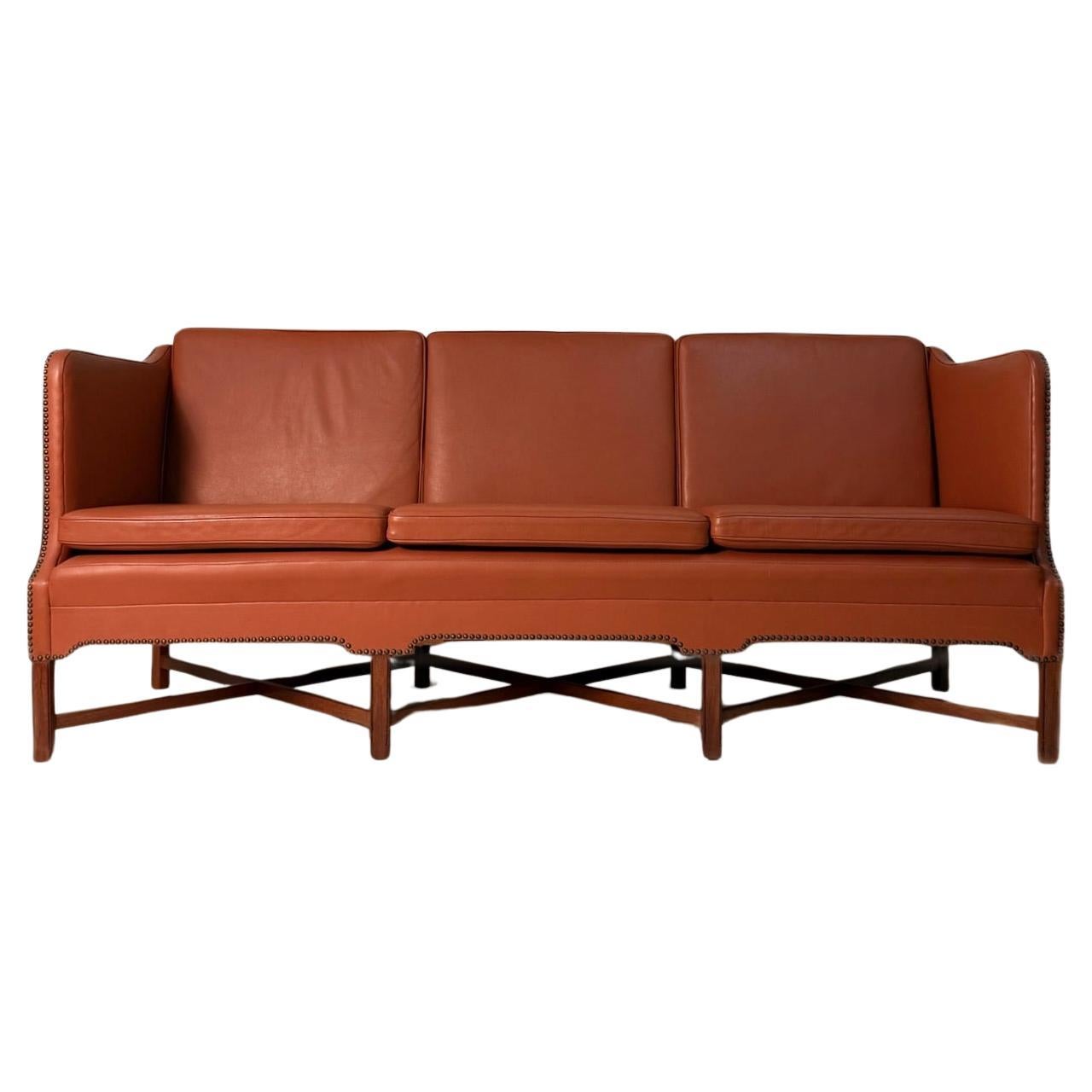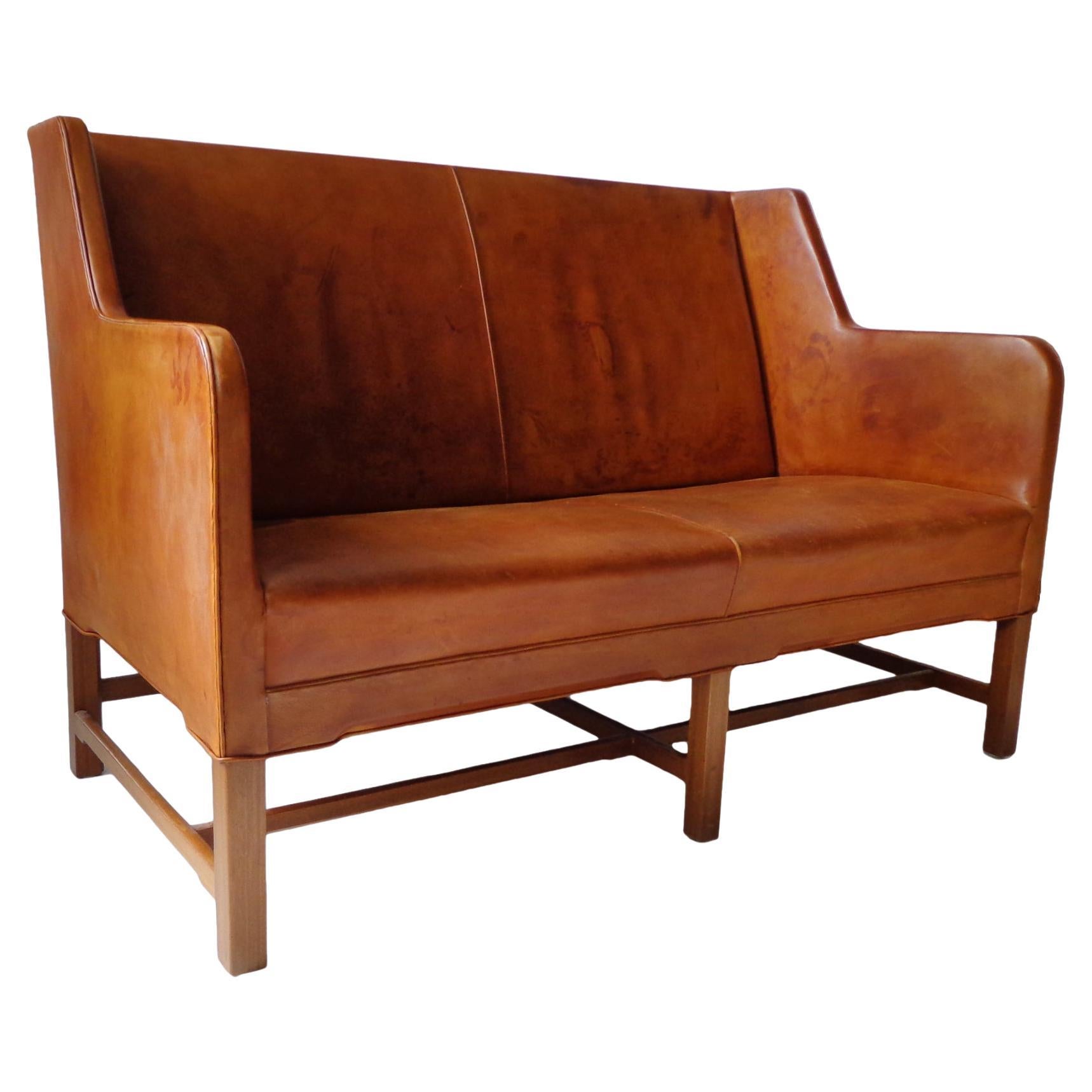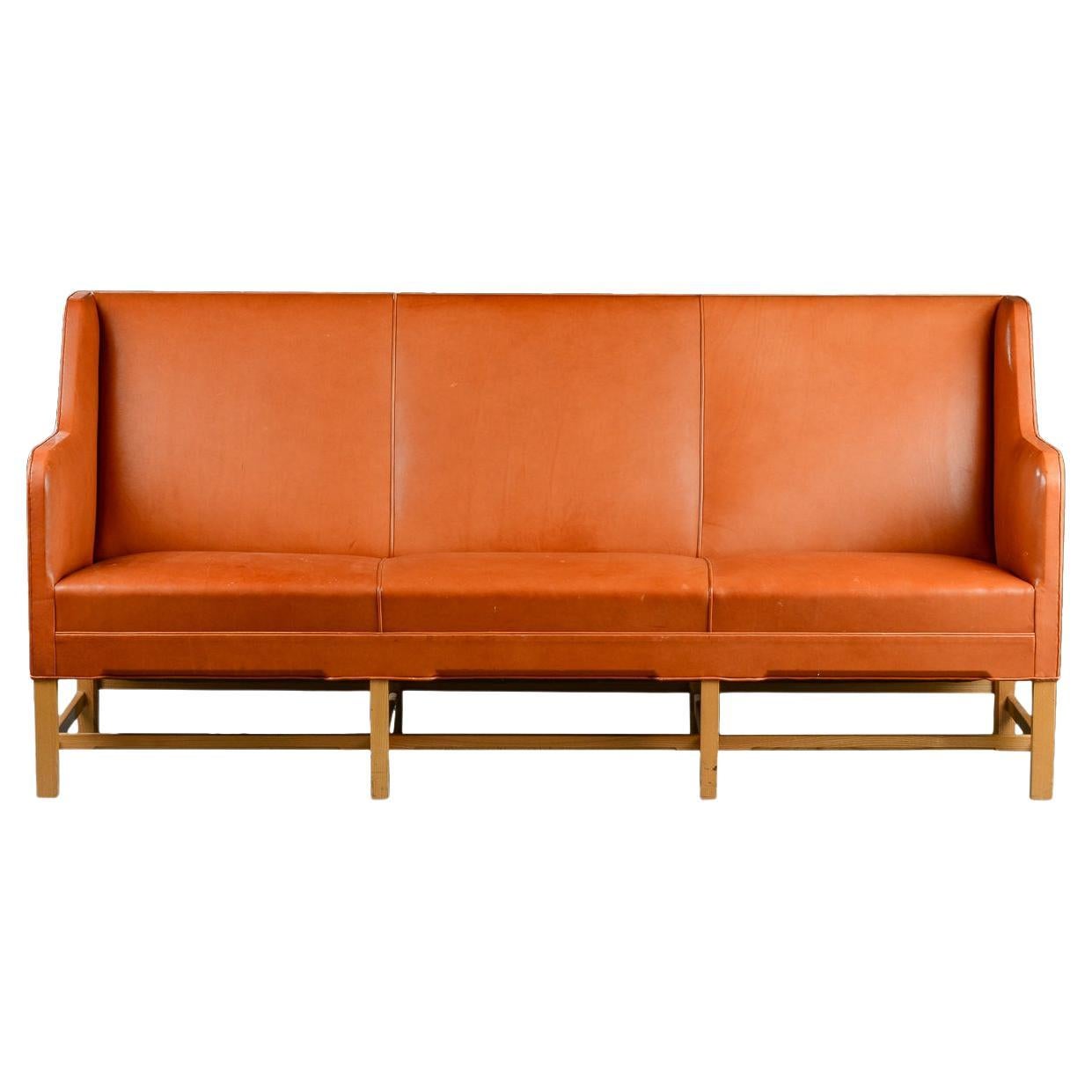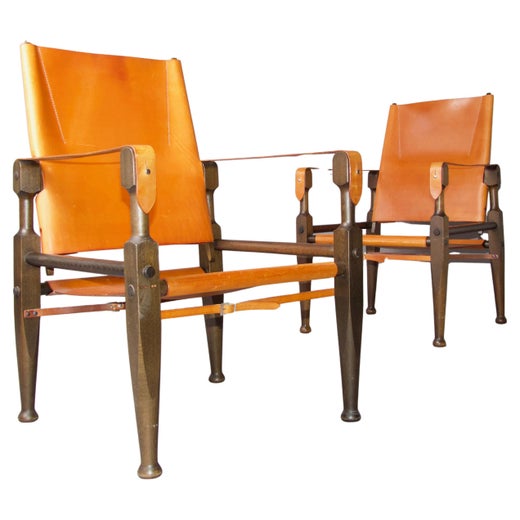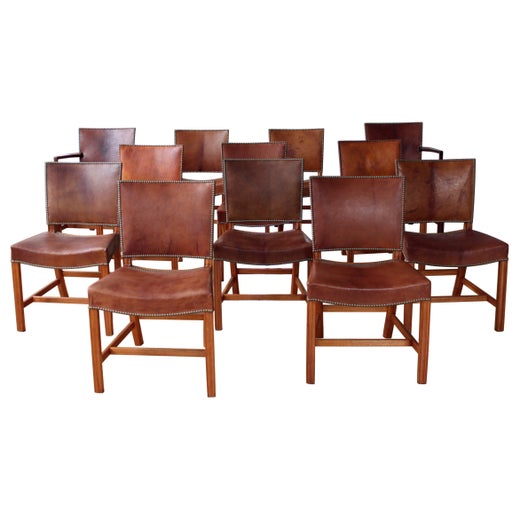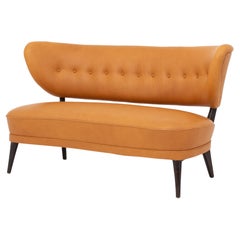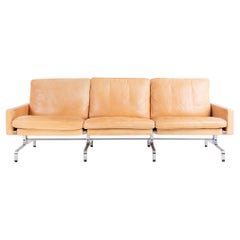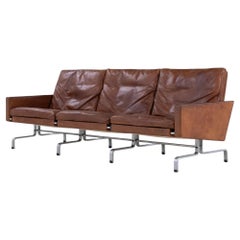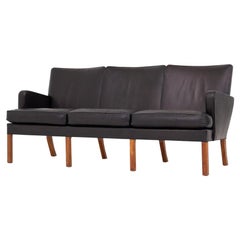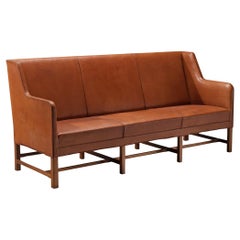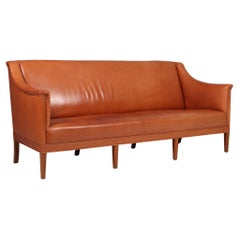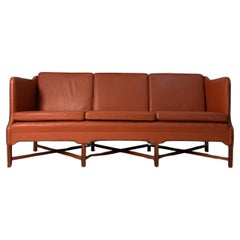KK 5011 - 3-seater sofa in mahogany and patinated niger leather
About the Item
- Creator:Rud Rasmussen (Cabinetmaker),Kaare Klint (Designer)
- Dimensions:Height: 36.23 in (92 cm)Width: 76.38 in (194 cm)Depth: 29.53 in (75 cm)Seat Height: 18.51 in (47 cm)
- Style:Mid-Century Modern (Of the Period)
- Materials and Techniques:
- Place of Origin:
- Period:
- Date of Manufacture:1935
- Condition:
- Seller Location:Copenhagen, DK
- Reference Number:Seller: 10554901stDibs: LU1008440568732
Kaare Klint
Architect, teacher and furniture designer Kaare Klint is among the most important figures in Scandinavian modernism. Widely recognized as the father of modern Danish furniture, Klint sought to pay homage to historical furniture styles and prized functionality as essential to designing for modern living. He established the design school at Copenhagen’s Royal Danish Academy of Fine Arts, and his students became mid-century legends of cabinetry and furniture-making.
Klint prioritized functionalism and drew on an array of influences in his own work. Furniture experts will observe the influence of 18th-century English seating in his Red chair, while Klint’s iconic Safari chair had roots in campaign furniture. The other exemplary chairs, sofas and tables for which he is known bear the mark of Thomas Chippendale and Biedermeier furniture as well as Greek and Roman forms.
Klint's father was Peder Vilhelm Jensen-Klint, a formidable architect of his day. The younger Klint initially followed in his father’s footsteps, studying under him as well as distinguished architect Carl Petersen. Alongside Danish architect Ivar Bentsen, he headed the renovation of the Designmuseum Denmark in Copenhagen from 1920–26 (Klint also furnished the institution as part of the project). Around the same time, Klint helped found the furniture design school at the Royal Danish Academy. The impact of his role as an instructor there cannot be overstated — he mentored such esteemed cabinetmakers and furniture designers as Børge Mogensen, Hans Wegner and Ole Wanscher.
A prominent advocate of ergonomics, Klint valued comfort and functionality over style. Painstaking research went into each piece of sophisticated yet wholly unadorned furniture he designed, as he endeavored to build structures that took into consideration human proportions and scale. And like the Shakers, Klint believed that quality craftsmanship and good materials were integral to the design of durable furniture that was free of embellishment.
The humble grace of Klint’s style characterizes legendary seating designs that continue to charm today’s legions of mid-century modern enthusiasts. His Safari chair, Faaborg chair, Ravenna armchair and Propeller stool — as well as most of the seating created by Danish modernists generally — have warmed interiors and influenced furniture designers all over the world.
Find vintage Kaare Klint furniture and other Scandinavian modern furniture on 1stDibs.
Rud Rasmussen
Exemplary designs for wood chairs, cabinets, desks and tables are part of the legacy associated with Rud Rasmussen, an iconic Danish furniture manufacturer that collaborated with some of the world’s best known and universally revered Scandinavian modernists.
Rud Rasmussen Snedkerier was established in 1869 in Copenhagen. The workshop’s founder, cabinetmaker Rudolph Rasmussen, was raised in a family of carpenters and had initially specialized in oak furniture. It wasn’t long before the business had grown — in 1876, Rasmussen was operating out of a four-storey factory, and by the end of the 19th century, the manufacturer had forged relationships with esteemed Danish architects including Vilhelm Dahlerup and Thorvald Bindesbøll.
With Rudolph Rasmussen's passing in 1904, the founder’s sons, Rudolph and Victor, took control of the company. They realized their father's dream of expanding the business — the firm had by then been accepting commissions from Copenhagen City Hall and was soon producing furniture for the likes of the police station, the postal service, ministries, technical universities and hospitals. More longstanding collaborations with legendary cabinetmakers and architects came into play, too.
Rud Rasmussen partnered with Mogens Koch, Børge Mogensen, Hans Wegner and Kaare Klint, the founder of the design school at Copenhagen’s Royal Danish Academy of Fine Arts. The manufacturer is known to collectors for producing Koch’s versatile bookcases, and, in 1933, Rud Rasmussen debuted Klint’s Safari chair — a clever and timeless interpretation of campaign furniture.
Carl Hansen and Søn acquired Rud Rasmussen in 2011.
Find vintage Rud Rasmussen seating, case pieces and decorative objects on 1stDibs.
- ShippingRetrieving quote...Shipping from: Kastrup, Denmark
- Return Policy
More From This Seller
View AllMid-20th Century Danish Mid-Century Modern Sofas
Leather, Beech
Mid-20th Century Danish Mid-Century Modern Sofas
Steel
Mid-20th Century Danish Mid-Century Modern Sofas
Steel
Mid-20th Century Danish Scandinavian Modern Sofas
Leather
Mid-20th Century Danish Mid-Century Modern Sofas
Steel
Mid-20th Century Danish Mid-Century Modern Sofas
Steel
You May Also Like
Vintage 1930s Danish Scandinavian Modern Sofas
Leather, Mahogany
Vintage 1940s Danish Scandinavian Modern Sofas
Mahogany, Leather
Vintage 1930s Danish Scandinavian Modern Sofas
Leather, Mahogany
Vintage 1930s Danish Scandinavian Modern Sofas
Leather, Mahogany
Vintage 1940s Danish Scandinavian Modern Sofas
Leather, Mahogany
Vintage 1970s Danish Scandinavian Modern Sofas
Leather, Ash
